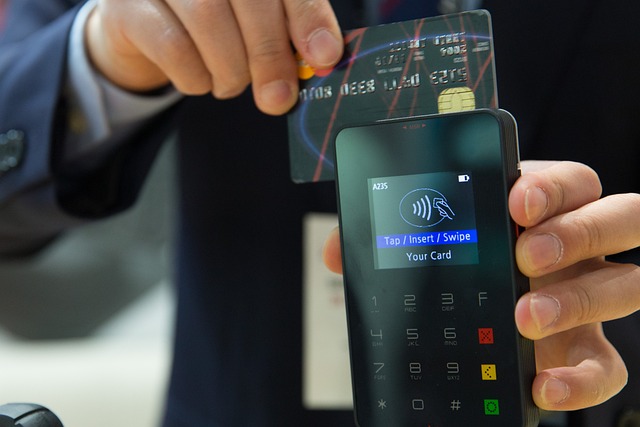Aadhaar cardholders can make banking transactions via the AePS, or Aadhaar enabled payment system. It is a project that gives all social groups more power by enabling them to use their Aadhaar cards for banking transactions. The owner of an Aadhaar card needs present biometric data at PoS or Aadhar Micro ATM to complete the transaction. The bank account associated with the Aadhaar card will be used for the transaction. AePS will be covered in-depth in this blog, along with its advantages and practical use.
Table of Contents
What is an Aadhaar enabled payment system?
The AEPS system makes financial and banking services available to everyone using Aadhaar to empower all facets of society. Aadhaar enabled payment system, or AEPS, enables you to transfer money, make payments, deposit cash, make withdrawals, check your bank balance, and more.
Aadhaar verification is required at point of Sale (PoS) or micro ATMs for customers to use AEPS to make payments. This platform is straightforward, safe, and convenient for financial transactions. The National Payments Corporation of India (NPCI) has launched yet another program to promote cashless transactions in India. Through a micro ATM or business correspondent (BC), customers can complete all transactions. Except for fund transfers, which require you to visit a specific bank BC, you can utilise any bank BC for these other transactions. Your bank account needs to be connected to Aadhaar to use AEPS.
What Advantages Do AePS or the Aadhaar Enabled Payment System Offer?
All societal segments can benefit from AePS, or the Aadhaar enabled payment system, in the following ways:
- Easy to use Aadhaar enabled payment system
- It requires the entry of biometric information in addition to the Aadhaar card number.
- It gives the disadvantaged group in society more power.
- To complete the purchase, users are not required to enter their bank information.
- The implementation of Aadhaar authentication makes it possible for consumers to access their bank accounts with ease.
- Given that one must provide biometric information and an Aadhaar number, AePS is secure.
- Micro PoS devices or Aadhar Micro ATMs can be transported to far-off villages to make it simple for customers to conduct transactions there.
AEPS can be a huge asset to your company as a business owner. It can assist your firm in gaining new clients because it enables more segments of society to use modern banking. Additionally, paying with AEPS is simple, effective, and fast, making the checkout process hassle-free and turning indifferent browsers into paying clients. Regardless of the size or scope of your business, you may utilise AEPS machines at your establishment to enable clients to safely purchase your products and services.
The Aadhaar Enabled Payment System: How Does It Work?
The Aadhaar enabled payment system device operates similarly to a POS device. Sellers must enter the customer’s Aadhaar information and utilise their fingerprints to validate the transaction in place of a credit or debit card. Additionally, buyers must supply the name or Issuer Identification Number of their bank.
A bank account must be connected to the cardholder’s unique identification number (Aadhaar). If more than one account is linked to an Aadhaar Card, transactions will be made using the principal account. The transaction will also need to be completed with a Personal Identification Number (PIN) or One Time Password (OTP).
Qualities of AePS
The following are an AePS facility’s main characteristics:
- Only the bank account linked to your Aadhaar will be used to deduct the transaction money.
- An Aadhaar card user can use the method to carry out standard banking operations like cash deposits, intrabank to interbank fund transfers, cash withdrawals, balance inquiries, and getting a mini bank statement via a banking correspondent.
Objectives of AEPS:
The following list includes AEPS’s objectives:
- To ensure that bank customers have the authority to undertake basic banking operations like cash withdrawals, cash deposits, money transfers, balance inquiries, and the ability to access mini statements through a business correspondent using their Aadhaar as proof of identity.
- to assist in achieving the Central Government of India’s and the Reserve Bank of India’s (RBI) mission of enabling financial inclusion for all.
- to assist RBI in achieving the goal of e-commerce payments.
- allowing banks to route interbank transactions originated by Aadhaar through a centralised switching and clearing organisation.
- to make it possible for the government to distribute government programs more easily, such as NREGA, social security pensions, etc., where Aadhaar is used as a legitimate document to confirm such program use.
- to make bank interoperability possible while maintaining security.
- establishing a framework for Aadhaar-enabled banking services.
Costs associated with AePS transactions
Transactions using an Aadhaar enabled payment system cost a little more than those using UPI. AePS transactions can cost as much as Rs. 15 each. The distribution of the transaction cost is as follows:
- The UIDAI may charge fees in the future, even though it hasn’t done so yet.
- A bank fee of up to 1% of the transaction may be assessed. The lowest cost is 5 rupees, and the highest is 15 rupees.
- A fee of 15 to 25 paisa may be charged by NPCI for settlement.
As of right now, the Union government is responsible for paying AePS until December 2019. Debit card, UPI, and AePS MDR fees are all covered. AePS transactions are hence now free of charge.
How should I use the AePS equipment?
AePS allows Aadhaar card holders with linked bank accounts to conduct transactions swiftly and easily. He or she only needs to adhere to the guidelines:
- Visit your neighbourhood banking correspondent
- in the PoS machine or Aadhar Micro ATMs, and enter your Aadhaar number.
- Choose the transaction type and type the name of the bank.
- To finish the transaction, enter the transaction amount.
- After that, submit your biometric data to verify the payment.
- Once the transaction has been completed, a receipt will be given.
Things to consider when utilising AePS
When using the AePS facility, remember the following:
- To use the AePS service, a bank account must be connected to an Aadhaar number.
- The transaction must be completed with a PIN or OTP.
- If numerous accounts are linked to Aadhaar, only the primary account can be utilised for transactions.
- Only bank accounts connected to Aadhaar are eligible for this feature.
Conclusion
Aadhaar Enabled Payment System, or AEPS, is referred to as a particular category of payment method. The National Payments Corporation of India (NPCI) is providing the service. Aadhaar authentication is used in financial transactions under the bank-led AEPS paradigm. You can benefit from this innovative and practical way of doing financial transactions as a business owner. Or, for any queries, you can contact Roundpay to solve them.







